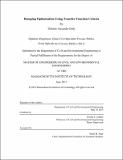| dc.contributor.advisor | Jerome J. Connor. | en_US |
| dc.contributor.author | Dody, Thibault Alexandre | en_US |
| dc.contributor.other | Massachusetts Institute of Technology. Department of Civil and Environmental Engineering. | en_US |
| dc.date.accessioned | 2013-12-06T19:50:48Z | |
| dc.date.available | 2013-12-06T19:50:48Z | |
| dc.date.copyright | 2013 | en_US |
| dc.date.issued | 2013 | en_US |
| dc.identifier.uri | http://hdl.handle.net/1721.1/82709 | |
| dc.description | Thesis (M. Eng.)--Massachusetts Institute of Technology, Dept. of Civil and Environmental Engineering, 2013. | en_US |
| dc.description | This electronic version was submitted by the student author. The certified thesis is available in the Institute Archives and Special Collections. | en_US |
| dc.description | Cataloged from student-submitted PDF version of thesis. | en_US |
| dc.description | Includes bibliographical references (p. 84-85). | en_US |
| dc.description.abstract | Seismic performance has become a key point in the design of every type of structures. Even the simplest buildings need protection in areas of high seismic activity.However,there is no method defined!by codes or general knowledge to help engineers make choices about the design of seismic protection devices. Even!though several theories to optimize the use of devices have been developed, there is little practical application in!structural engineering. The purpose of this paper is first to settle on the elements that can be used to protect structures. By looking at their effects on structures, it was found that dampers are the easiest to use in an optimization process. After describing the need of progress in the field of earthquake protections, this paper focuses on the impact of additional damping in a 2-D frame. Finally, the method developed by Izuru Takewaki was studied and implemented. By looking at the limitation of the interstory drift, the algorithm produced the optimal distribution of the damping. In order to estimate the performance of! the method, the results were compared to empirical damping distributions. A complete program was developed in order to apply the optimization method to a wide range of custom 2-D frames. | en_US |
| dc.description.statementofresponsibility | by Thibault Alexandre Dody. | en_US |
| dc.format.extent | 124 p. | en_US |
| dc.language.iso | eng | en_US |
| dc.publisher | Massachusetts Institute of Technology | en_US |
| dc.rights | M.I.T. theses are protected by
copyright. They may be viewed from this source for any purpose, but
reproduction or distribution in any format is prohibited without written
permission. See provided URL for inquiries about permission. | en_US |
| dc.rights.uri | http://dspace.mit.edu/handle/1721.1/7582 | en_US |
| dc.subject | Civil and Environmental Engineering. | en_US |
| dc.title | Damping optimization using transfer function criteria | en_US |
| dc.type | Thesis | en_US |
| dc.description.degree | M.Eng. | en_US |
| dc.contributor.department | Massachusetts Institute of Technology. Department of Civil and Environmental Engineering | |
| dc.identifier.oclc | 862809318 | en_US |
